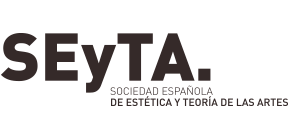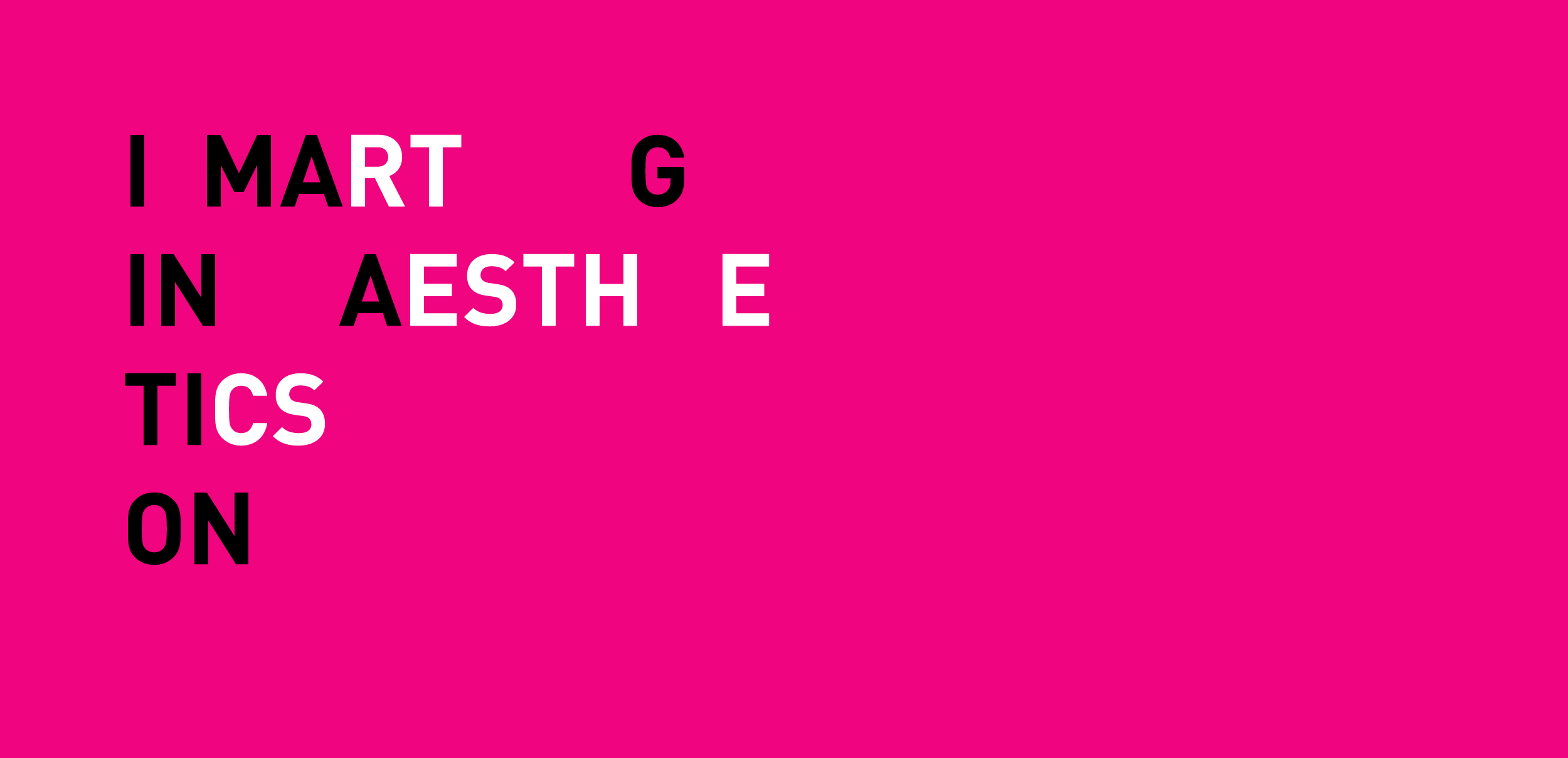Murcia, 4 y 5 de abril de 2019. El Seminario Europeo de Estética organiza este evento dedicado a la imaginación como concepto-hilo que recorre la historia de la estética desde sus orígenes hasta la actualidad.
Arte, estética e imaginación
Art, esthétique et imagination
Art, Aesthetics, and Imagination
Murcia, 4-5 de abril de 2019
Patrocinado por/sponsorisé par/supported by
Financiado por la Fundación Séneca-Agencia de Ciencia y Tecnología de la Región de Murcia con cargo al Programa Regional de Movilidad, Colaboración e Intercambio de Conocimiento “Jiménez de la Espada”» (20582/OC/18) y por el Ministerio de Economía y Competitividad de España en el proyecto «Experiencia estética de las artes y complejidad de la percepción» (FFI2015-64271-MINECO-FEDER,UE)
Comité organizador/
Prof. Dr. Salvador Rubio Marco (Universidad de Murcia, España)
Profa. Dra. Francisca Pérez Carreño (Universidad de Murcia, España)
Profa. Dra. María José Alcaraz León (Universidad de Murcia, España)
Profa. Dra. Matilde Carrasco Barranco (Universidad de Murcia, España)
Comité científico /
Prof. Dr. Salvador Rubio Marco (Universidad de Murcia, España)
Profa. Dra. Danielle Lories (Universidad Católica de Lovaina, Bélgica)
Profa. Dra. Carole Talon-Hugon (Universidad de Niza-Sophia Antipolis, Francia)
Profa. Dra. Anne Elisabeth Setjen (Universidad de Roskilde, Dinamarca)
Profa. Dra. Maddalena Mazzocut-Mis (Universidad de Milán, Italia)
Prof. Dr. Claudio Rozzoni (Universidad Nueva de Lisboa, Portugal)
TEMÁTICA/
La imaginación es uno de los conceptos-hilo que permiten recorrer la historia de la estética desde sus orígenes hasta la actualidad. Una distinción ya clásica entre los filósofos es la división entre imaginación reproductiva (el proceso mental que revive imágenes anteriores) e imaginación productiva o creadora, la cual a su vez se subdivide tradicionalmente en fantasía e imaginación constructiva. No obstante, la noción filosófica actual de imaginación es un cajón que acoge muy distintas denominaciones y conceptos en contextos históricos y autorales que determinan profundamente el sentido y el alcance de éstos. Desde Platón y su famosa clasificación de los tipos de imágenes, o desde la mimesis aristotélica y sus secuelas, hasta los debates contemporáneos en torno a las llamadas “teorías de la ficción” (Searle, Currie, Walton, Stevenson, Lopes, etc.), numerosos autores de la relevancia de Berkeley, Kant, Addison, Schelling, Hegel, Coleridge, Wordsworth, Baudelaire, Collingwood, Unamuno o Ferraris, entre otros muchos, se han ocupado de la imaginación con matices muy variados.
El papel de la imaginación es clave en la constitución de la estética como nueva disciplina filosófica en el XVIII, pero sus metamorfosis son no menos imprescindibles para entender las estéticas del Romanticismo o los postromanticismos y los desarrollos del s. XX. No es sorprendente, pues, que el protagonismo de la imaginación en los foros de discusión de la estética contemporánea esté en consonancia con todo ello.
Territorios (artísticos o no) como el cine, la fotografía, la pintura, la literatura (novela, biografía, teatro, poesía), la serie televisiva, el diseño, la estética de la naturaleza o la arquitectura, pero también el estudio de objetos estéticos como los recuerdos, las emociones, los sueños, las percepciones o las ilusiones, son lugares en los que el concepto de imaginación continúa siendo un nudo central hoy en día.
ARGUMENTAIRE/
L’imagination est un des fils conducteurs qui permettent de parcourir l’histoire de l’esthétique dès ses origines pré-illustrés et toujours significatif l’heure actuelle. Une distinction déjà classique chez les philosophes fait la distinction entre l’imagination reproductive (le procès mental qui se nourrit d’images antérieures) et l’imagination productive ou créatrice, qui peut être traditionnellement subdivisée à son tour en fantaisie d’un côté et imagination constructrice de l’autre. Néanmoins, la notion actuelle d’imagination n’est qu’une grande boîte accueillant des concepts et des noms très divers dont les contextes historiques et des auteurs très différents ont déterminé profondément leurs significations. Dès Platon et sa célèbre classification des types d’images, ou dès la mimesis aristotélicienne et ses suites, jusqu’aux débats contemporaines autour de ce qu’on nomme “théories de la fiction” (Searle, Currie, Walton, Stevenson, Lopes, etc.), un grand nombre d’auteurs aussi remarquables que Berkeley, Kant, Addison, Schelling, Hegel, Coleridge, Wordsworth, Baudelaire, Collingwood, Unamuno ou Ferraris, parmi beaucoup d’autres, se sont occupés de l’imagination avec des nuances très variées.
Le rôle de l’imagination est une clé de la constitution de l’esthétique comme nouvelle discipline philosophique au XVIIIe siècle, mais ses métamorphoses sont également indispensables si l’on veut comprendre les esthétiques romantiques ou postromantiques et les développements du XXe siècle. Il n’est pas surprenant, donc, que l’importance de l’imagination dans les forums de débat de l’esthétique contemporaine soit en consonance avec tout ce que l’on vient d’évoquer.
Les domaines (artistiques ou non) du cinéma, de la peinture, de la photographie, de la littérature (roman, biographie, théâtre, poésie), de la série TV, du design, de l’esthétique de la nature ou de l’architecture, mais aussi l’étude des objets esthétiques tels que les souvenirs, les émotions, les rêves, les perceptions ou les illusions sont des lieux où le concept d’imagination continue à être un nœud central aujourd’hui.
ARGUMENT/
Imagination is one of the thread-concepts which enable us to go through the history of aesthetics from the origins until now. There is a classical division for philosophers distinguishing between reproductive imagination (the mental process reviving previous images) and productive (or creative) imagination which may be divided in turn into fantasy and constructive imagination. Nonetheless, the present philosophical notion of imagination seems like a crate containing very varied concepts and names the meaning and scope of which depend on very different historical contexts and authorships. From Plato and his well-known classification of types of images, or from the Aristotelian mimesis and its sequels, until the contemporary debates on (so called) “theories of fiction” (Searle, Currie, Walton, Stevenson, Lopes, etc.), a long list of relevant authors such as Berkeley, Kant, Addison, Schelling, Hegel, Coleridge, Wordsworth, Baudelaire, Collingwood, Unamuno or Ferraris, among others, have dealt with imagination even with very diverse nuances.
The role of imagination is a key for the setting-up of the aesthetics as a new philosophical discipline in the 18th century, but its metamorphoses are equally indispensable in order to understand the Romantic or Postromantic aesthetics, as well as the developments of the 20th century. It is no wonder, then, that the relevance of imagination in contemporary debates on aesthetics would be in accordance with those facts.
The domains (artistic or not) of film, painting, photography, literature (novel, biography, theatre, poetry), TV series, design, aesthetics of nature, architecture, and also the study of aesthetic objects such as memories, emotions, dreams, perceptions, illusions, are places where the concept of imagination continues being a central node today.
PROGRAMA / PROGRAMME / PROGRAMME
4 de abril / 4 avril / 4 April
Centro Cultural Las Claras de la Fundación Cajamurcia
9:00 Recepción/ Accueil / Venue
9:30-9:40 Bienvenida y presentación /Bienvenue et introduction/ Welcome and introduction
9:40-10:20 Carole Talon-Hugon (Universidad de Niza- Sophia Antipolis): Contagious imaginations
10:20-11:00 Francisca Pérez Carreño (UMU): Imagination, fiction and the arts
Pausa-café / Pause-café / Coffee break (40’). Cafetería del Teatro Romea
11:40-12:20 Maddalena Mazzocut-Mis (Universidad degli Studi de Milán): Imagination at work. Denis Diderot in front of a painting
12:20-13:00 Matilde Carrasco Barranco (UMU): Can beauty be imagined?
Pausa comida / Pause déjeuner / Lunch break
Sala Jacobo de las Leyes-Hemeroteca Campus de La Merced
16:00-16:30 Andrés Luna Bermejo (Doctorando/PhD student UMU): Imagination as a link between expressiveness and expression
16:30-17:00 Lucía Jiménez Sánchez (Doctoranda/PhD student UMU): Imagination in design: how can we achieve the possible?
Pausa-café / Pause-café / Coffee break (30’). Cafetería del Teatro Romea
17:30-18:00 Gilberto D. Vásquez Rodríguez (Doctorando/ PhD student UMU): Sincerity and imagination
21:00 Cena / Dîner / Dinner (Restaurante Pura Cepa)
5 de abril/ 5 avril/ 5 April
Centro Cultural Las Claras de la Fundación Cajamurcia
9:20-10:00 Anne Elisabeth Sejten (Universidad de Roskilde): Beyond formal beauty: material imagination in Gaston Bachelard
10:00-10:40 María José Alcaraz León (UMU): More than Make-believe: on the uses of imagination in understanding fictional literature
Pausa-café/ Pause-café/ Coffee break (40’). Cafetería del Teatro Romea
11:20-12:00 Claudio Rozzoni (U. Nova de Lisboa): Is it true? Imagination, art and “quasi”-emotions
12:00-12:40 Danielle Lories (U. Católica de Lovaina): The ideal of beauty : the Kantian imagination at work
12:40-13:20 Héctor J. Pérez (UPV): Imaginative empathy and narrative climax in contemporary serials
Pausa comida/ Pause déjeuner/ Lunch break
Sala Jacobo de las Leyes-Hemeroteca Campus de La Merced
16:00-16:30 Rosa María Arenas Martínez (Doctoranda/ PhD student UMU): Imagination as an unveiling tool and strategy: from the visible to the real in artistic production
16:30-17:10 Salvador Rubio Marco (UMU): Imaginative openness to “possibilities” and aspects in literary fiction
17:10 Clausura/ Clôture/ Closing










